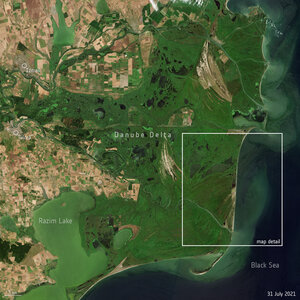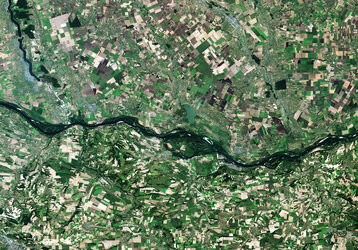Accept all cookies Accept only essential cookies See our Cookie Notice

About ESA
The European Space Agency (ESA) is Europe’s gateway to space. Its mission is to shape the development of Europe’s space capability and ensure that investment in space continues to deliver benefits to the citizens of Europe and the world.
Highlights
ESA - United space in Europe
This is ESA ESA facts Member States & Cooperating States Funding Director General Top management For Member State Delegations European vision European Space Policy ESA & EU Space Councils Responsibility & Sustainability Annual Report Calendar of meetings Corporate newsEstablishments & sites
ESA Headquarters ESA ESTEC ESA ESOC ESA ESRIN ESA EAC ESA ESAC Europe's Spaceport ESA ESEC ESA ECSAT Brussels Office Washington OfficeWorking with ESA
Business with ESA ESA Commercialisation Gateway Law at ESA Careers Cyber resilience at ESA IT at ESA Newsroom Partnerships Merchandising Licence Education Open Space Innovation Platform Integrity and Reporting Administrative Tribunal Health and SafetyMore about ESA
History ESA Historical Archives Exhibitions Publications Art & Culture ESA Merchandise Kids Diversity ESA Brand Centre ESA ChampionsLatest
Space in Member States
Find out more about space activities in our 23 Member States, and understand how ESA works together with their national agencies, institutions and organisations.
Science & Exploration
Exploring our Solar System and unlocking the secrets of the Universe
Go to topicAstronauts
Missions
Juice Euclid Webb Solar Orbiter BepiColombo Gaia ExoMars Cheops Exoplanet missions More missionsActivities
International Space Station Orion service module Gateway Concordia Caves & Pangaea BenefitsLatest
Space Safety
Protecting life and infrastructure on Earth and in orbit
Go to topicAsteroids
Asteroids and Planetary Defence Asteroid danger explained Flyeye telescope: asteroid detection Hera mission: asteroid deflection Near-Earth Object Coordination CentreSpace junk
About space debris Space debris by the numbers Space Environment Report In space refuelling, refurbishing and removingSafety from space
Clean Space ecodesign Zero Debris Technologies Space for Earth Supporting Sustainable DevelopmentLatest
Applications
Using space to benefit citizens and meet future challenges on Earth
Go to topicObserving the Earth
Observing the Earth Future EO Copernicus Meteorology Space for our climate Satellite missionsCommercialisation
ESA Commercialisation Gateway Open Space Innovation Platform Business Incubation ESA Space SolutionsLatest
Enabling & Support
Making space accessible and developing the technologies for the future
Go to topicBuilding missions
Space Engineering and Technology Test centre Laboratories Concurrent Design Facility Preparing for the future Shaping the Future Discovery and Preparation Advanced Concepts TeamSpace transportation
Space Transportation Ariane Vega Space Rider Future space transportation Boost! Europe's Spaceport Launches from the European Spaceport from 2012Latest
Danube Delta
Thank you for liking
You have already liked this page, you can only like it once!
The Copernicus Sentinel-2 mission takes us over the Danube Delta – the second largest river delta in Europe.
Zoom in to see this image at its full 10 m resolution or click on the circles to learn more about the features in it.
The Danube Delta is a labyrinth of water and land shared between Romania and Ukraine, made up of countless lakes, channels and islands lying at the end of the 2860 km-long river of the same name. The Danube River rises in the Black Forest mountains in Germany and along its course, passes through 10 countries: Germany, Austria, Slovakia, Hungary, Croatia, Serbia, Bulgaria, Romania, Moldova and Ukraine before emptying into the Black Sea.
The Danube Delta covers an area of some 4300 sq km and is known for its abundance of birdlife, as it hosts more than 300 species of birds as well as 45 species of freshwater fish in its numerous lakes and marshes. In 1991, the Romanian part of the Danube Delta became part of UNESCO’s list of World Heritage Sites.
In this true-colour image, captured in April 2020, the vast reed beds can be seen in shades of brown which is typical during this time of year. The Danube is visible (in the left of the image) before splitting into the various channels and branches that flow through the reeds and grassland before reaching the Black Sea. The distinct light-green colours in the sea are likely due to sediment being carried by the river.
Just south of the Danube Delta lie the lagoons of Razim (Razelm) and Sinoe, visible in emerald green owing to a high concentration of algae. This lagoon complex was formed with the help of the Danube’s alluvial deposits and the gradual eastward movement of the coastal currents caused by the advancement of the delta.
In the top-right of the image lies the Sasyk, or Kunduk, Lagoon in southern Ukraine. The site has been designated as Ramsar Wetland Site as it is important for migrating, breeding and moulting waterbirds.
Data gathered by the Sentinel-2 satellites are used for monitoring land use and changes, land management, agriculture, forestry and natural disasters (floods, forest fires, landslides and erosion). Offering colour vision for the Copernicus programme, Sentinel-2 delivers optical images from the visible to short-wave infrared range of the electromagnetic spectrum.
This image is also featured on the Earth from Space video programme.
-
CREDIT
contains modified Copernicus Sentinel data (2020), processed by ESA -
LICENCE
CC BY-SA 3.0 IGO or ESA Standard Licence
(content can be used under either licence)

Danube Delta

Wide-view of the Danube Delta

Earth from Space: Danube Delta

Danube Delta interferogram















 Germany
Germany
 Austria
Austria
 Belgium
Belgium
 Denmark
Denmark
 Spain
Spain
 Estonia
Estonia
 Finland
Finland
 France
France
 Greece
Greece
 Hungary
Hungary
 Ireland
Ireland
 Italy
Italy
 Luxembourg
Luxembourg
 Norway
Norway
 The Netherlands
The Netherlands
 Poland
Poland
 Portugal
Portugal
 Czechia
Czechia
 Romania
Romania
 United Kingdom
United Kingdom
 Slovenia
Slovenia
 Sweden
Sweden
 Switzerland
Switzerland

























